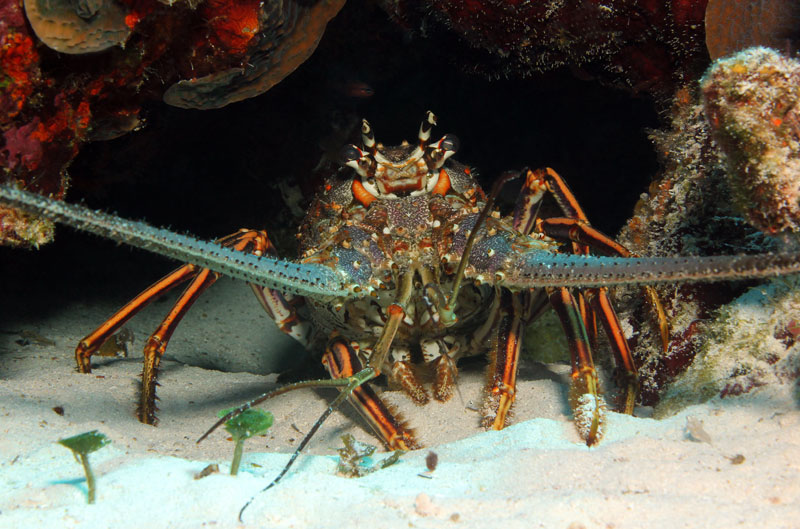With the warmer ocean waters from the coming El Nino, this year’s lobster season (which runs October 3 to March 16) could be one of the best in years for the many California divers. It’s an exciting time of year for thousands of divers, both local and from other areas, to hit the water from shore and in boats to hunt for one of California’s favorite delicacies.
Along with the excitement of diving for lobster also comes risk, and every year we lose divers who are pursuing lobster. During our last season, which ended on March 16, there were five lobster-fishing deaths and two severe injuries among divers near Catalina Island, off the Ventura County coast, near Long Beach, and in Mission Bay in San Diego. In 2014, five divers died off Southern California shores in the first week of the season.
Last Friday, U.S. Coast Guard officials in San Diego held a news conference to discuss safety rules for lobster diving. San Diego’s NBC 7 was at the press conference and recorded this video:
Lobster divers who find themselves in trouble often share similar profiles. More accidents or fatalities often occur in the first couple of weeks, likely because the excitement of the new season brings out many divers, many who do not typically hunt or dive at night. Other divers do not have the proper physical fitness levels to dive at night, in scuba gear, when conditions are less than ideal. Following recommended safety guidelines can help decrease injuries and accidents during lobster season.
The Diver’s Alert Network has put together the following guidelines for safer lobster diving, all of which are ideal for California divers to heed. While some may sound obvious, many diving accidents can have their roots traced back to these 5 key factors:
- Evaluate your fitness to participate in lobster hunting.
Participation in lobster hunting requires good physical fitness. Regular moderate exercise without vigorous exercise may not prepare you sufficiently for the physical challenges that may occur during lobster hunting. Be thorough and honest when assessing your health status.Consider the medication you currently take and if the health reasons for those medications are a major risk for injury while diving. If your health status has changed since your last dive, schedule a physical exam and discuss with your physician if your current fitness level matches the demands of diving. - Refresh skills and check equipment.
Enroll in a refresher course if you have not had the recent opportunity to use your dive skills. If you have limited experience with hunting lobster, learn how to safety dive for them. Review your gear and make sure it is up to safe standards, and become familiar with new equipment before embarking on a lobster dive. - Know the dive environment.
Lobster hunting may occur at night, so be sure you are comfortable and experienced in diving at night before doing so during lobster season. Boat traffic may be increased during lobster season, so be alert at depth and at the surface. Be familiar with the dive site and know if it poses specific safety hazards, such as kelp or strong currents. - Dive with a buddy.
Diving in pairs is advised. Review hand signals prior to descending to avoid miscommunication and plan your dive together. Stay close to your buddy throughout the dive. - Plan your dive and dive your plan.
Don’t be distracted by hunting for lobster and ignore your dive plan. Avoid diving deeper than the safety limits for the sake of catching lobster and be continuously aware of your breathing gas consumption. Constantly monitor your gauges and make sure you have enough air for a recommended safety stop and slow, safe ascent.
Lobster season is an exciting time in California, and conditions this year are ideal for bagging big bugs in excellent diving conditions. Bringing home lobster should always be a fun and safe process – take your time to make sure you’re diving safely and ensure a successful hunt today and in the future.
.

